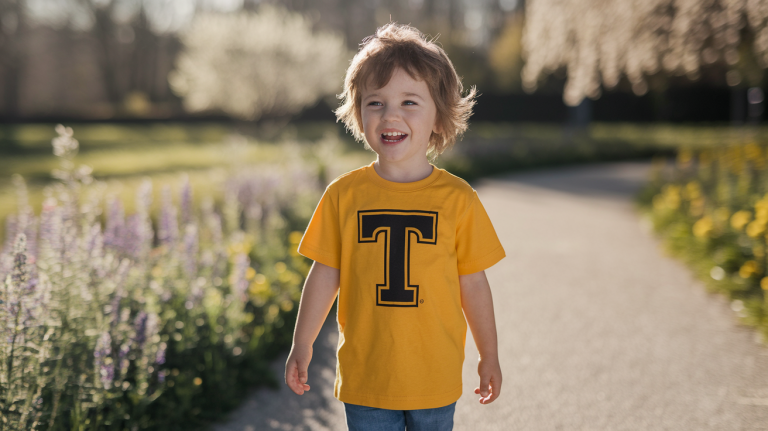Sensory Experiences for Development of Children

What if the key to your child’s growth and peace of mind could be found in something as simple as playing with textures, sounds, and colours?
Sensory play involves activities that stimulate a child’s senses – touch, sight, hearing, smell, and taste – creating rich learning opportunities while naturally soothing their nervous system.
This powerful combination makes sensory experiences essential for healthy development, as children learn their world through hands-on discovery while finding comfort in the process.
From toddlers just beginning to learn to school-age children needing focused activities, sensory play offers benefits that extend far beyond entertainment.
This guide will walk you through various sensory activities, practical implementation tips, and age-appropriate ideas to support your child’s developmental path while creating moments of calm in their busy world.
Understanding Sensory Play
Sensory play is your child’s natural way of learning through their five senses.
When kids squish playdough, listen to music, or splash in water, they’re building neural pathways that support brain development, emotional balance, and social connections.
These experiences help children process information, manage big feelings, and communicate with others more effectively. For neurotypical children, sensory activities boost creativity and problem-solving skills.
For neurodivergent kids, including those with autism or ADHD, sensory play provides essential regulation tools, helping them feel grounded and focused.
Every child benefits from these rich, multi-sensory learning opportunities that make development both natural and joyful.
Benefits of Sensory Activities
These are the most important benefits of sensory activities to consider before trying them out with your child.
- Sensory activities create powerful ripple effects throughout your child’s development that extend far beyond playtime.
- When children engage with different textures, sounds, and materials, their ability to focus and maintain attention naturally improves as their brains learn to filter and process information more effectively.
- These experiences serve as natural stress relievers, helping little ones work through anxiety and overwhelming emotions by providing safe outlets for expression and self-regulation.
- The open-ended nature of sensory play sparks creativity as children experiment, problem-solve, and think outside conventional boundaries.
- Meanwhile, activities like finger painting, clay molding, and sandbox play strengthen both fine motor skills needed for writing and gross motor abilities required for physical coordination.
These benefits work together, creating confident, capable children who can better navigate their world, express themselves clearly, and approach challenges with curiosity rather than fear.
Types of Sensory Experiences
Sensory play comes in many forms, each targeting specific senses to support your child’s development and emotional well-being naturally.
1. Tactile Play

Sand play, playdough, and finger painting offer rich texture experiences that build neural connections. Create mess-free zones using shower curtains, contained bins, or outdoor spaces.
These hands-on activities strengthen hand muscles while providing calming input for anxious children through repetitive motions and satisfying textures.
2. Auditory Sensory Play

Listening walks, musical instruments, and sound matching games build auditory processing skills. Soft music and nature sounds calm overstimulated children, while rhythmic drumming and upbeat songs provide energy boosts.
Sound activities help kids learn to filter background noise and focus on important auditory information in their environment.
3. Visual Sensory Play

Bubble play, light tables, and colorful sensory bottles captivate attention while soothing overwhelmed minds. Gentle, predictable visual patterns help children self-regulate when feeling scattered.
These activities support visual tracking skills needed for reading while providing peaceful focal points that reduce anxiety and promote concentration naturally
4. Olfactory and Taste Exploration

Scented playdough, edible finger paints, and safe taste tests engage often-overlooked senses. Familiar scents like vanilla or lavender can anchor children during stressful moments, triggering positive memories and calm feelings.
These experiences expand sensory tolerance while creating positive associations with new textures and flavors safely.

Jumping on trampolines, swinging, and obstacle courses provide essential body awareness input. These movement activities help children understand where their body is in space while regulating their arousal levels.
Heavy work and rhythmic motions naturally calm the nervous system, improving focus and emotional control throughout the day.
Sensory Bins and DIY Setups
Sensory bins offer contained, customizable play experiences that bring learning themes to life while keeping mess manageable at home.
|
Category |
Key Ideas |
Purpose |
|
Creating Themed Sensory Bins |
|
|
|
Age-Appropriate Filler Ideas |
|
|
|
Safety and Cleanup Tips |
|
|
Calm-Down Sensory Tools
These portable regulation tools help children manage big emotions and find their center during overwhelming moments throughout the day.
- Weighted Blankets and Lap Pads: Weighted blankets provide gentle pressure that mimics comforting hugs, naturally reducing anxiety and promoting better sleep patterns for restless children.
- Fidget Toys and Squishies: Fidget toys and squishies offer discreet sensory input that helps children focus during quiet activities while releasing nervous energy productively.
- DIY Calm Jars and Stress Balls: Homemade calm jars filled with glitter and water create mesmerizing visual focus tools while DIY stress balls provide satisfying pressure relief.
Outdoor Sensory Adventures
Nature provides endless sensory opportunities that promote physical activity, emotional regulation, and connection with the natural world around us.
- Nature Walks and Scavenger Hunts: Nature walks engage all senses through varied textures, sounds, and sights while scavenger hunts add purposeful exploration that builds observation skills.
- Gardening as Sensory Therapy: Gardening offers rich tactile experiences through soil, seeds, and plants while teaching responsibility and providing calming, grounding activities for anxious children.
- Water Play for Hot Days: Water play provides refreshing sensory input through splashing, pouring, and temperature changes while supporting motor skill development and joyful summer memories.
Safety and Supervision Tips
Creating safe sensory experiences requires thoughtful material selection, careful monitoring, and gradual introduction to build positive associations with new textures.
1. Choosing Non-Toxic Materials (20 words): Select BPA-free, food-grade materials without harmful chemicals to ensure your baby’s safety during exploration and inevitable mouthing of toys.
2. Monitoring for Choking Hazards (20 words): Regularly inspect toys for small parts, loose pieces, or wear that could break off and pose serious choking risks.
3. Gradual Texture Introduction (20 words): Start with smooth, soft textures before progressing to bumpy, rough, or varied surfaces to avoid overwhelming your baby’s senses.
Conclusion
Every child responds differently to sensory experiences, so take time to observe what brings your little one joy and calm.
Notice which activities help them focus and which ones provide the regulation they need during challenging moments. Remember that sensory play should feel natural and enjoyable for both you and your child – there’s no perfect way to do it.
Stay flexible with your approach, adapting activities based on your child’s mood, interests, and developmental needs.
The goal is connection and growth, not perfection. Start small, follow your child’s lead, and celebrate the messy, wonderful moments of exploration together.
These simple sensory experiences create lasting memories while supporting your child’s development in meaningful ways.






